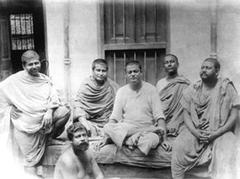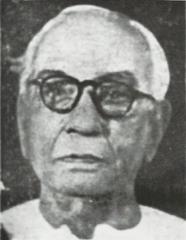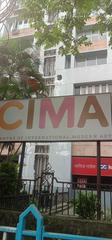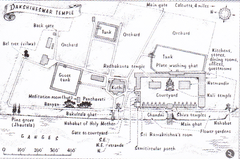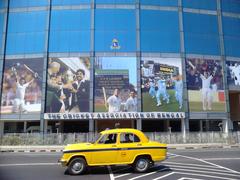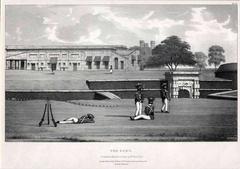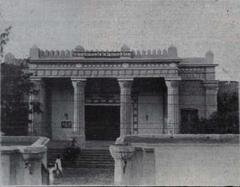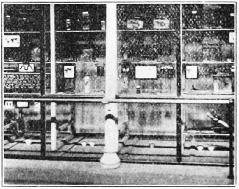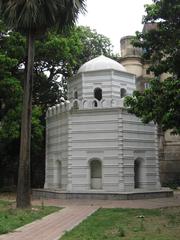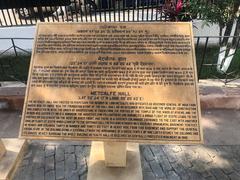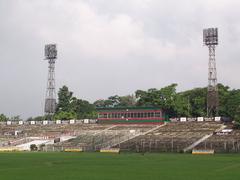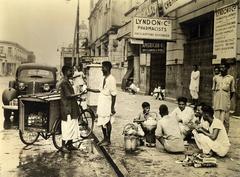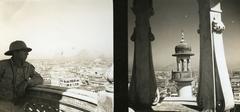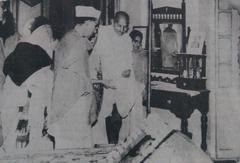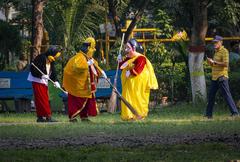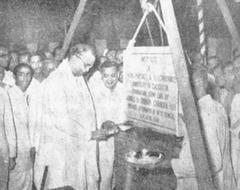Calcutta Police Museum: Visiting Hours, Ticket Information, and Historical Significance in Kolkata
Date: 14/06/2025
Introduction
The Calcutta Police Museum is a unique historical institution in Kolkata, India, offering visitors a fascinating journey into the evolution of law enforcement and civic reform in one of India’s oldest metropolitan centers. Set within a heritage mansion once owned by the renowned social reformer Raja Ram Mohan Roy, the museum bridges the city’s colonial, intellectual, and social narratives. With its diverse exhibits—including antique police equipment, rare documents, and revolutionary memorabilia—the museum not only preserves the legacy of the Kolkata Police but also highlights their pivotal role in India’s freedom movement and modern urban life. Whether you are a history enthusiast, student, or traveler eager to explore Kolkata’s rich heritage, the Calcutta Police Museum promises an engaging and educational experience.
For more detailed visitor information, updates, and official resources, visit Explore Our India, TripXL, and Kolkata Tourism.
Historical Overview
Origins of the Museum Site
The museum is housed in a mansion that was once the residence of Raja Ram Mohan Roy, a visionary social reformer and founder of the Brahmo Samaj. This site was a hub of intellectual and reformist activity in early 19th-century Kolkata, reflecting Roy’s commitment to progressive social change. After Roy’s departure to England in 1830, the property changed hands and eventually became the Sukea Street Thana (police station) under colonial administration in 1874, before being acquired by the government and transitioning into its current role as a museum. This layered past mirrors Kolkata’s evolution from a center of reform to a hub of governance and law enforcement (Explore Our India).
Establishment of the Museum
Established in 1996, the Calcutta Police Museum was conceived as a repository and showcase for the Kolkata Police’s storied history. Initially comprising three galleries, it has expanded to eight, each presenting artifacts and narratives that chronicle the force’s development from its founding in 1856 to the present day. The building’s colonial-era architecture and tranquil gardens provide a dignified setting to reflect on the city’s administrative and civic legacy (Explore Our India).
Kolkata Police: A Historical Context
Founded in 1856, the Kolkata Police is one of India’s oldest and most influential police forces. It was modeled on the London Metropolitan Police, aiming to address the complexities of urban governance in colonial Calcutta. Over the decades, the force has played a vital role during the Bengal Renaissance, the Swadeshi Movement, and India’s independence struggle, and continues to adapt to the demands of modern urban management. The museum’s collections—ranging from colonial-era artifacts to modern policing equipment—provide a nuanced perspective on the force’s multifaceted legacy (Explore Our India).
Visiting Information
Location and Access
- Address: 113, Acharya Prafulla Chandra Roy Road, Machuabazar, Kolkata, West Bengal 700009, India (kolkatatourism.travel)
- Proximity: Near Manicktala crossing; accessible by metro (MG Road), bus, taxi, train (Sealdah Railway Station, 2.5 km), and is about 13 km from Netaji Subhas Chandra Bose International Airport.
Opening Hours and Admission
- Hours: Tuesday to Sunday, 10:00 AM to 5:00 PM
- Closed: Mondays and public holidays
- Admission: Free for all visitors (kolkatatourism.travel)
- Photography: Not permitted inside the museum
Accessibility
- Wheelchair Access: The museum provides ramps and accessible facilities, though some areas may have limitations due to the heritage building’s design. Visitors with mobility concerns are advised to contact the museum in advance (kolkatatourism.travel).
- Restrooms: Available on-site
- Parking: Limited; public transportation recommended
Visitor Facilities
- Cafeteria: “Coffee Ghar” offers refreshments (kolkatacitytours.com)
- Gift Shop: Sells memorabilia, books, and souvenirs (kolkatacitytours.com)
- Library: Open to the public with annual membership for research (getbengal.com)
- Rest Areas: Benches and shaded gardens for relaxation
Museum Layout and Exhibits
Architectural Heritage
The museum’s colonial-era mansion features wooden staircases, Corinthian pillars, high ceilings, and expansive gardens, creating a serene and reflective environment (getbengal.com).
Galleries and Highlights
The museum spans approximately 2,000 square feet across two floors, with eight galleries covering:
- Policing History: Evolution from 19th-century chowkis to the contemporary force
- Arms and Ammunition: Revolutionary weapons, “Book Bomb,” pen-shaped revolver, cane-stick gun, and bullet belts (kolkatatourism.travel)
- Freedom Struggle Memorabilia: Files and documents connected to Netaji Subhas Chandra Bose, including 84 declassified files (kolkatatourism.travel)
- World War II Relics: Japanese bomb dropped on Calcutta
- Historic Vehicles: Pre-independence three-wheeler motorcycle, 1930s manual traffic signal post (shop.museumsofindia.org)
- Recovered Artefacts: Religious statues (e.g., a 9th–10th century Lord Vishnu idol) and items seized from smugglers
- Crime Scene Evidence: Counterfeit currency, tools, and investigative case material
- Communication Devices: Telegraphs, radios, and surveillance equipment tracing the evolution of police technology
Interactive and Educational Areas
- Outdoor Interpretation Centre: Interactive learning for children on policing, traffic control, and public safety (kolkatacitytours.com)
- Guided Tours: Available for schools and groups upon advance request (sukcharagrb.in)
Planning Your Visit
Travel Tips
- Best Time: Weekday mornings, especially November to February for pleasant weather (wanderlog.com)
- Duration: 1.5 to 2 hours recommended
- Language: Exhibits in English and Bengali
- Prohibited Items: Large bags and photography equipment
- Conduct: Maintain silence and do not touch exhibits
Special Events and Rotating Exhibitions
The museum periodically hosts themed exhibitions and educational programs on topics such as women in policing, technological advancements, and the freedom movement. Check the official website or local listings for updates on events.
Nearby Attractions
Located in the heart of Kolkata, the museum is close to several major historical sites:
- Indian Museum: India’s oldest and largest museum
- Victoria Memorial: Iconic marble monument and museum
- Kalighat Kali Temple: Renowned Hindu pilgrimage site
- St. Paul’s Cathedral: Notable for its Gothic architecture
- Marble Palace: 19th-century mansion and art gallery
These sites provide a broader context for Kolkata’s rich cultural heritage (veenaworld.com).
Frequently Asked Questions (FAQs)
Q: What are the Calcutta Police Museum opening hours?
A: Tuesday to Sunday, 10:00 AM to 5:00 PM; closed Mondays and public holidays.
Q: Is there an entry fee?
A: No, admission is free for all visitors.
Q: Is the museum accessible for differently-abled visitors?
A: Yes, though some areas may have limited access. Contact the museum ahead for details.
Q: Are guided tours available?
A: Yes, especially for schools and groups; advance booking is recommended.
Q: Can I take photographs inside?
A: Photography is not allowed inside the museum.
Q: How can I reach the museum?
A: The museum is accessible by metro, bus, taxi, and is close to Sealdah Railway Station and major roads.
Visuals and Virtual Experience
While interior photography is not permitted, the museum’s historic facade and gardens offer excellent photo opportunities. For a virtual preview or to plan your visit, consult official tourism portals or the museum’s website for maps and multimedia resources.
Conclusion
The Calcutta Police Museum stands as a living testament to Kolkata’s layered history, blending the legacy of social reform, colonial administration, and modern policing in a heritage-rich setting. Its comprehensive exhibits, educational outreach, and tranquil environment make it a must-visit for anyone interested in Kolkata’s historical sites and the evolution of civic life in India. Free entry, central location, accessibility, and proximity to other landmarks further enhance its appeal. For the latest updates, guided tour information, and detailed insights, visit the official museum and tourism websites or download the Audiala app for a personalized heritage experience.
References and Official Links
- Explore Our India: Calcutta Police Museum
- TripXL: Kolkata Police Museum Guide
- Kolkata Tourism: Police Museum
- Museum of India Shop: Police Museum
- Get Bengal: Kolkata Police Museum Feature
- Kolkatacitytours.com: Police Museum
- Sukcharagrb Group Visits Info
- Wanderlog: Police Museum Details
- Veena World: Museums in Kolkata
- All India Go: Calcutta Police Museum
- Visitor Account: Abir Mukherjee
